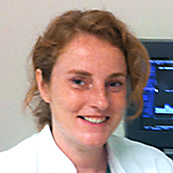Verfahren zur Rückverfolgung (Look back)
Zusammenfassung
Beschrieben wird das aktuelle Vorgehen sowohl beim vom Spender ausgehenden Look back als auch beim vom Empfänger ausgehenden Look back. Der Schwerpunkt liegt dabei auf den für klinisch tätige Ärzte relevanten Aspekten und berücksichtigt auch die zugrunde liegenden Vorgaben.
The present procedure is described – both the look back concerning the donor as well as the look back concerning the recipient. The main focus lies on the relevant aspects for doctors working in a clinic and also takes the legal facts that are present into consideration.
Zum Risiko bakteriell bedingter Transfusionsreaktionen durch Thrombozytenkonzentrate
Zusammenfassung
Thrombozytenkonzentrate bergen von allen Blutkomponenten aufgrund ihrer Lagerungsbedingungen das höchste Risiko der bakteriell bedingten Transfusionsreaktion. GMP-gerechte Herstellungsbedingungen, geeignete Hautdesinfektionsverfahren und das Predonation Sampling reduzieren das Risiko des Keimeintrags, gleichwohl schließen sie eine Kontamination nicht aus. Die Detektion von Bakterien mit dem BacT / ALERT-System an einer zeitnah zum Abschluss der Herstellung aus Thrombozytenkonzentraten gezogenen Probe verfolgt das Ziel, Kontamination vor der Abgabe bzw. Transfusion zu erkennen. Der rechtzeitige Ausschluss bakteriell belasteter TK ist das Ziel. Eine Reihe von Studien demonstriert die Machbarkeit in der Routine, allerdings auch die Grenzen der Methode. Langsam sich vermehrende Bakterien zeigen ein spätes positives Signal und bedingt durch falsch negative Kulturen treten schwerwiegende septische Transfusionsreaktionen insbesondere gegen Ende der Haltbarkeitsfrist der TK weiterhin auf. Auch die Studie der GERMS Group zeigt, dass nur eine Teilmenge der kontaminierten TK von der Transfusion auszuschließen ist. Die Rate der bestätigt positiven TK aus Apherese und gepoolten Buffy coats war nicht unterschiedlich, sodass die Präparate als gleichwertig einzustufen sind. Das BacT /ALERTScreening von TK löst das Problem nur teilweise und die zukünftige Herausforderung wird die Entwicklung eines schnellen, sensitiven und spezifischen Testsystems sein, das zeitnah zur Transfusion verlässliche Ergebnisse liefert. Die Vermeidung septischer Transfusionsreaktionen durch eine qualitätsgesicherte Transfusionspraxis sowie die schnelle Diagnose und umfassende Aufklärung von Verdachtsfällen ist Aufgabe der Kliniker. Ob sich das Prinzip der Pathogeninaktivierung von Blutkomponenten durchsetzen kann und das Problem der transfusionsassoziierten Sepsis zu lösen vermag, bleibt abzuwarten.
Of all the blood components, platelet concentrates harbour the highest risk of bacterial transfusion reactions due to the conditions in which they are stored. Although the risk of introducing bacteria can be minimised by manufacturing conditions in compliance with GMP, appropriate skin disinfection methods, and predonation sampling, these precautions cannot entirely rule out such contamination. Use of the BacT / ALERT system to detect bacteria in a sample taken around completion of the platelet concentrate aims to identify contamination before supplying and transfusing the concentrate. The objective is to exclude bacterially contaminated platelet concentrates at an early stage. While a number of studies have demonstrated the feasibility of this in routine practice, they have also highlighted the method’s limitations. Bacteria that replicate slowly show a late positive signal and, due to the false-negative cultures, serious septic transfusion reactions continue to occur, particularly towards the end of the concentrate’s shelf-life. The study by the GERMS Group also demonstrates that only some of the contaminated PCs have to be excluded from the transfusion. Since the rate of confirmed positive PCs from apheresis and pooled buffy coats did not differ, the preparations have to be classified as being of equal quality. BacT / ALERT screening only partly solves the problem, and the future challenge will be to develop a quick, sensitive and specific test system which will yield reliable results close to the time of the transfusion. It is the task of the clinician to prevent septic transfusion reactions by ensuring quality assured transfusion practices, making rapid diagnoses, and investigating suspected events thoroughly. It remains to be seen whether the principle of pathogen inactivation of blood components will become accepted and will be able to solve the problem of transfusion-associated sepsis.
Spendersicherheit bei der Mobilisation und Entnahme von peripheren Blutstammzellen
Zusammenfassung
Die allogene Transplantation hämatopoetischer Stammzellen zeigte in den letzten Jahren in Deutschland einen kontinuierlichen Anstieg der Fallzahlen mit zuletzt über 2.000 Transplantationen pro Jahr. Diese Entwicklung ist einerseits bedingt durch die Zunahme der peripheren Blutstammzelltransplantationen mit einem Anteil von inzwischen 87 % bei rückläufigen Zahlen für die Knochenmarktransplantation und andererseits durch die zunehmende Verfügbarkeit von nichtverwandten Spendern, deren Anteil inzwischen bei 64 % liegt. Die Anwendung von Granulozyten-Colonie stimulierendem Faktor (G-CSF) zur Mobilisation der peripheren Blutstammzellen und die Stammzellentnahme müssen ganz besonders bei nicht-verwandten Spendern mit der größtmöglichen Sicherheit erfolgen. Die rechtlichen Vorgaben sowie die nationalen und internationalen Standards für die Spendersicherheit, unerwünschte Wirkungen der Mobilisation und der Stammzellspende sowie bisher aufgetretene schwerwiegende Ereignisse werden dargestellt. Diese erfordern eine umfassende Aufklärung der Spender. Darüber hinaus werden potentielle Langzeitrisiken der G-CSFApplikation diskutiert und mögliche Maßnahmen zur weiteren Optimierung der Spendersicherheit vorgeschlagen.
The number of allogeneic transplants of hematopoietic stem cells in Germany has been rapidly increasing in recent years and was over 2,000 in 2006. This development is supported by the increased use of peripheral blood stem cells (currently 87 % of all allogeneic transplants) and the high success rate of unrelated donor searches allowing almost two thirds of allogeneic transplants to be performed from an unrelated donor. The utilization of Granulocyte Colony Stimulating Factor (G-CSF) to mobilize peripheral blood stem cells for harvest has to be performed with utmost care and precautions, in particular in unrelated donors. This paper describes the legal obligations and the national and international standards for donor safety. Known side effects of stem cell mobilisation as well as all serious adverse events documented require comprehensive information of potential donors. Moreover potential long term risks of G-CSF application are discussed in depth and measures furthering donor safety are proposed.
Hämorrhagische Diathesen - Teil 2
Zusammenfassung
Während im ersten Teil dieser Übersicht (hämotherapie 9/2007; pp. 13-31) die Einteilung der Blutungsneigung in Thrombozytopenien bzw. Thrombozytopathien, Koagulopathien und Vaskulopathien im Vordergrund stand, sollen in diesem zweiten Teil an den klinisch wichtigen Beispielen der disseminierten intravasalen Gerinnung (DIC) und der erworbenen Hemmkörper-Hämophilie diagnostische und therapeutische Strategien im Umgang mit blutenden Patienten diskutiert werden. Bei angeborenen hämorrhagischen Diathesen wie den Hämophilien A oder B ist anamnestisch meist die Blutungsneigung vorbekannt. Im Gegensatz hierzu werden bei den in dieser Übersicht diskutierten, erworbenen Formen häufig sowohl Patient und Angehörige, als auch medizinisches Personal von der Blutungsneigung überrascht, die mit einer bis dato leeren Eigen- und Familien-Anamnese hinsichtlich Hämorrhagien einhergeht. Es ist wichtig, schnell zur korrekten Diagnose zu kommen und eine zielgerichtete Behandlung einzuleiten, deren langfristiger Erfolg unter anderem auch von der Zeit bis zum Behandlungsbeginn abhängt. Eine kontinuierliche klinische und labordiagnostische Überwachung der eingeleiteten Maßnahmen macht nicht nur eine an den einzelnen Patienten angepasste „Therapie nach Maß“ möglich, sondern bestätigt bei Erfolg der eingeleiteten Maßnahmen auch die zu Anfang korrekt getroffene Verdachtsdiagnose. Zum Abschluss dieser Übersicht werden Literatur und Kontakte aufgeführt, die bei Interesse an den diskutierten Fragestellungen weiterführen.
In the fi rst part of this overview (hämotherapie 9/2007; pp. 13-31), we focused on the classifi cation of bleeding disorders in thrombocytopenia/ impaired platelet function, coagulopathy and vasculopathy. This second part discusses diagnostic and therapeutic strategies for bleeding patients using the two clinically relevant examples for acquired bleeding disorders, disseminated intravascular coagulation (DIC) and acquired haemophilia with inhibitors. While patients with hereditary bleeding disorders like haemophilia A or B usually have a history of bleeding episodes, patients, family members and medical staff are often caught off guard, when bleeding occurs due to acquired bleeding disorders, where personal and family history are both negative. A quick initial tentative diagnosis and a rapid, purposeful start of therapeutic interventions are mandatory for a positive outcome. Successful treatment of these disorders is amongst others a matter of “time to treatment”. Continuous clinical and laboratory monitoring not only offers the benefi t of treatment tailored to the individual patient, but if successful, also corroborates the initial tentative diagnosis. This second part of our overview also includes suggestions for further reading and information on how to contact scientifi c groups in the fi eld of haemostasis.












